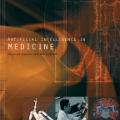Age-disaggregated health data is crucial for effective public health planning and monitoring. Monitoring under-five mortality, for example, requires highly detailed age data since the distribution of potential causes of death varies substantially within the first few years of life. Comparative researchers often have to rely on multiple data sources yet, these sources often have ages aggregated at different levels, making it difficult to combine the data into a single, coherent picture. To address this challenge in the context of under-five cause-specific mortality, we propose a Bayesian approach, that calibrates data with different age structures to produce unified and accurate estimates of the standardized age group distributions. We consider age-disaggregated death counts as fully-classified multinomial data and show that by incorporating partially-classified aggregated data, we can construct an improved Bayes estimator of the multinomial parameters under the Kullback-Leibler (KL) loss. We illustrate the method using both synthetic and real data, demonstrating that the proposed method achieves adequate performance in imputing incomplete classification. Finally, we present the results of numerical studies examining the conditions necessary for obtaining improved estimators. These studies provide insights and interpretations that can be used to aid future research and inform guidance for practitioners on appropriate levels of age disaggregation, with the aim of improving the accuracy and reliability of under-five cause-specific mortality estimates.
翻译:以年龄分列的健康数据对有效的公共卫生规划和监测至关重要。例如,监测五岁以下幼儿死亡率需要高度详细的年龄数据,因为潜在死亡原因的分布在生命的头几年里差别很大。比较研究者往往不得不依赖多种数据来源,但这些来源往往在不同层次上都具有年限,因此很难将数据合并成单一、一致的图象。为了应对五岁以下特定原因死亡率方面的挑战,我们建议采用巴耶斯方法,用不同年龄结构校准数据,以得出标准化年龄组分布的统一和准确估计数。我们认为,按年龄分列的死亡数字是完全分类的多位数数据,并表明,通过纳入部分分类的汇总数据,我们可以建立一个更好的海湾估计数字来源,以不同层次的估算值为基础,根据Kullack-Leiber(KL)损失,我们用合成和真实数据来说明方法,表明拟议方法在估算不完全的分类方面取得了适当的业绩。我们介绍了数字研究结果,审查了改进估计数字所需的条件。通过这些研究,我们可以通过纳入部分分类的汇总综合数据,我们就可以建立一个更好的海湾测算方法,并解释未来精确度,以便根据具体年龄进行适当的分析。




